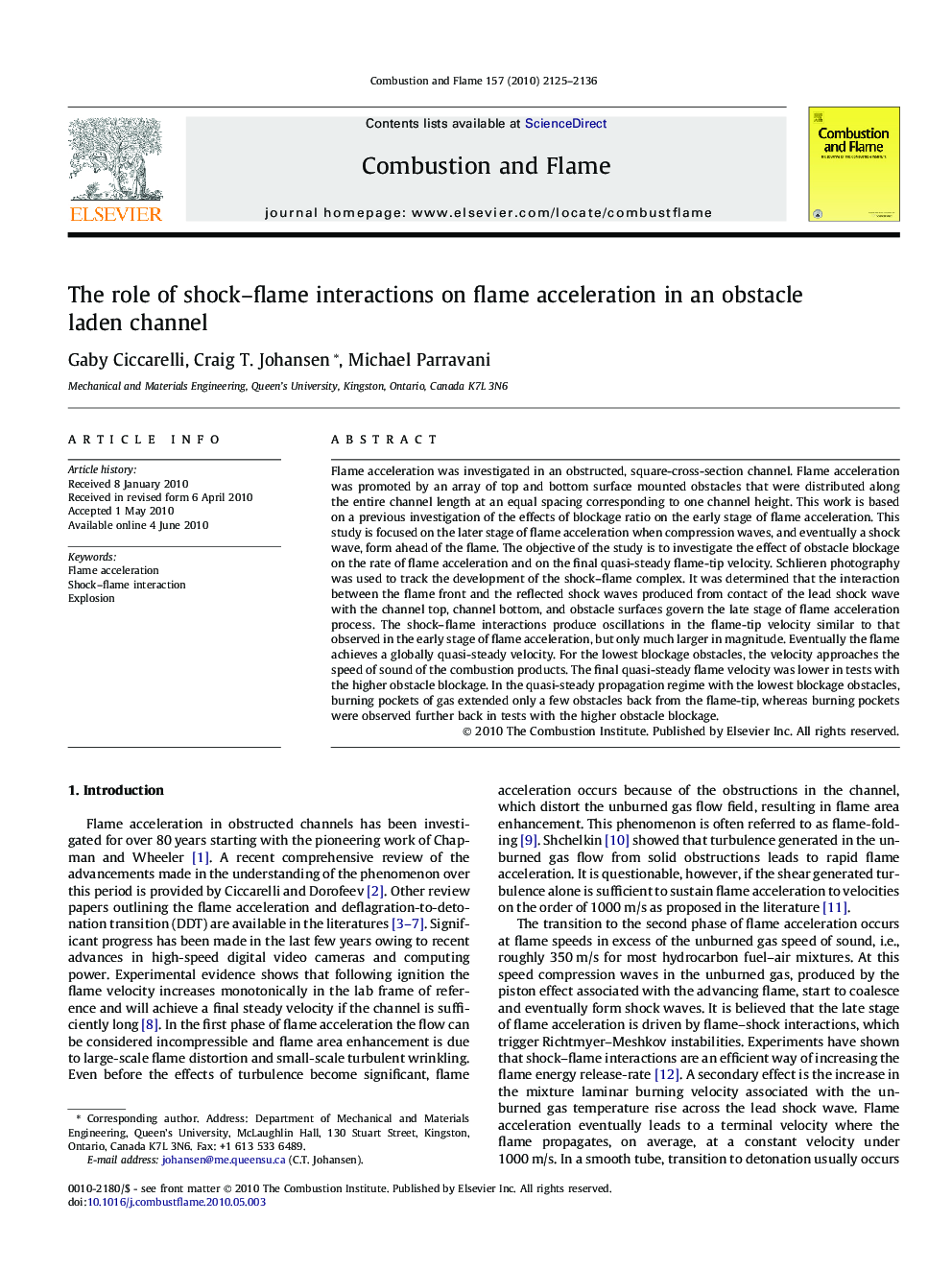| Article ID | Journal | Published Year | Pages | File Type |
|---|---|---|---|---|
| 166685 | Combustion and Flame | 2010 | 12 Pages |
Flame acceleration was investigated in an obstructed, square-cross-section channel. Flame acceleration was promoted by an array of top and bottom surface mounted obstacles that were distributed along the entire channel length at an equal spacing corresponding to one channel height. This work is based on a previous investigation of the effects of blockage ratio on the early stage of flame acceleration. This study is focused on the later stage of flame acceleration when compression waves, and eventually a shock wave, form ahead of the flame. The objective of the study is to investigate the effect of obstacle blockage on the rate of flame acceleration and on the final quasi-steady flame-tip velocity. Schlieren photography was used to track the development of the shock–flame complex. It was determined that the interaction between the flame front and the reflected shock waves produced from contact of the lead shock wave with the channel top, channel bottom, and obstacle surfaces govern the late stage of flame acceleration process. The shock–flame interactions produce oscillations in the flame-tip velocity similar to that observed in the early stage of flame acceleration, but only much larger in magnitude. Eventually the flame achieves a globally quasi-steady velocity. For the lowest blockage obstacles, the velocity approaches the speed of sound of the combustion products. The final quasi-steady flame velocity was lower in tests with the higher obstacle blockage. In the quasi-steady propagation regime with the lowest blockage obstacles, burning pockets of gas extended only a few obstacles back from the flame-tip, whereas burning pockets were observed further back in tests with the higher obstacle blockage.
